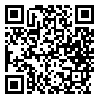BibTeX | RIS | EndNote | Medlars | ProCite | Reference Manager | RefWorks
Send citation to:
URL: http://jdc.tums.ac.ir/article-1-5690-en.html
Background and Aim: In line with the increase in cases of dermatophytosis of the body and dermatophytosis of the groin, the cases of species resistant to antifungal drugs, especially terbinafine, are increasing. The present study was designed to investigate the drug resistance pattern of dermatophyte species isolated from 27 patients referred to Razi Skin Hospital.
Methods: Skin samples of patients were collected from the groin, buttock and body from the active margin of the lesion. Some of the sample was examined under the microscope for the presence of arthroconidia and fungal hyphae. Cultivation on Saburo dextrose agar 2% special medium with chloramphenicol and cyclohexamide was used to determine the primary identity of dermatophyte species, morphological characteristics were used. To accurately identify trichophytons isolated from the skin of patients by (molecular) genotyping method, ITS1 and ITS4 primers were used. Universal primers) were used. Microdilution broth drug sensitivity test was performed according to M38-3rd ed - CLSI protocol for dermatophyte isolates to terbinafine, itraconazole, fluconazole and voriconazole.
Results: 25 patients were infected with Trichophyton indotinae. 2 patients were infected with Trichophyton interdigitale. In the present study, 4.27 (14.81%) of the patients had antifungal resistance (1 μg/ml≤the minimum concentration of fungal growth inhibition for terbinafine).
Conclusion: Failure to perform mycological examinations before initiating treatment can result in misdiagnosis. Do not use the antifungal susceptibility test lead to challenging to manage treatment-refractory cases. inadequate and inappropriate treatment combinations can increase the number of resistant species worldwide.
Received: 2024/03/17 | Accepted: 2024/02/4 | Published: 2024/02/4
| Rights and permissions | |
 |
This work is licensed under a Creative Commons Attribution-NonCommercial 4.0 International License. |





